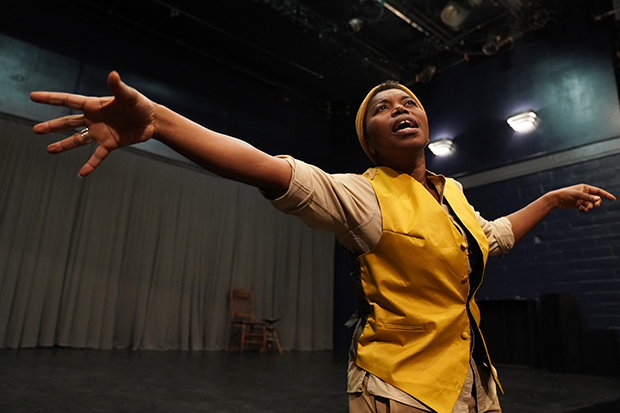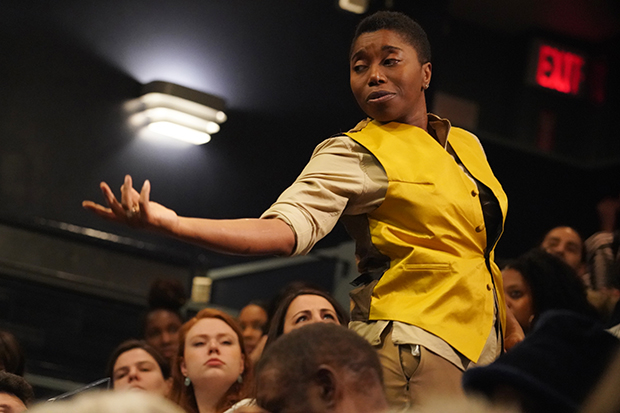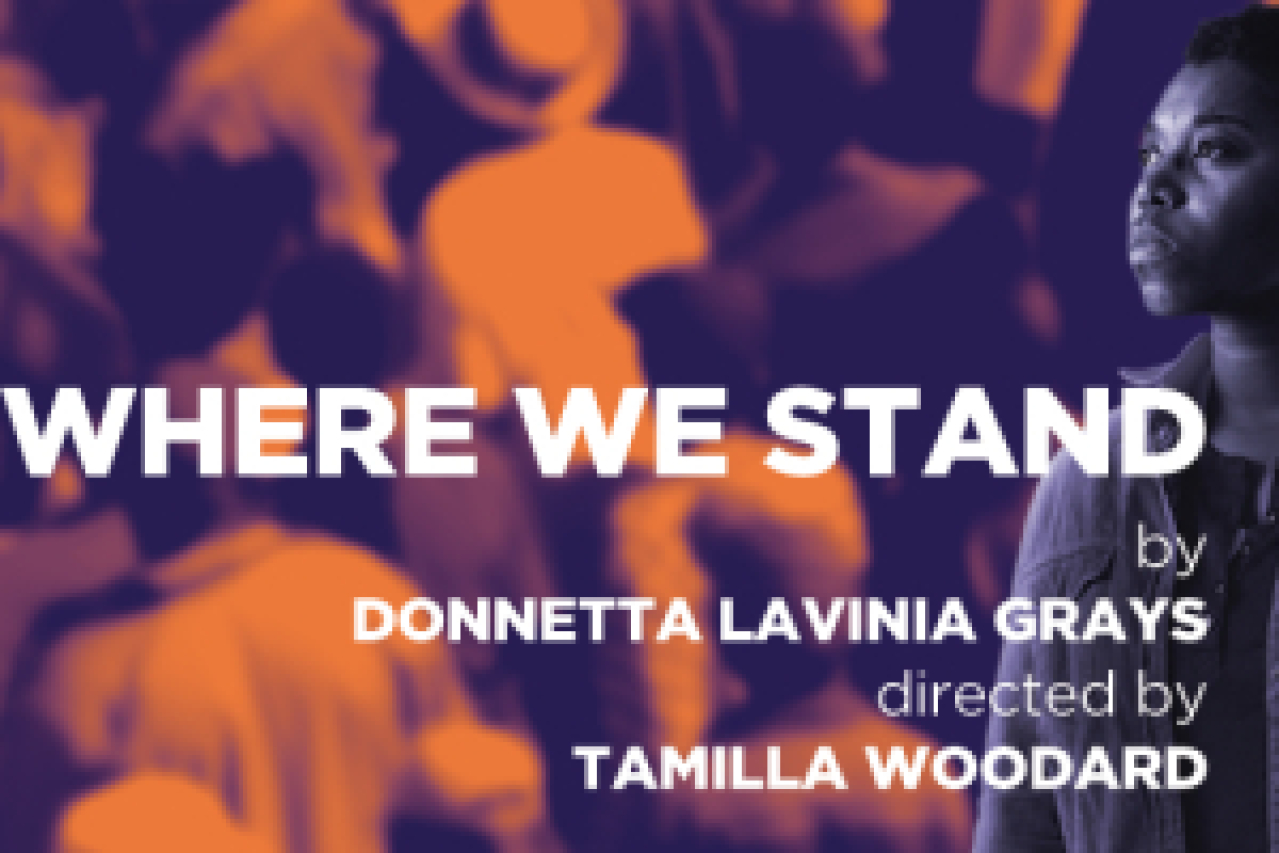Where We Stand Reveals a Community on the Precipice of a Big Decision

(© Joan Marcus)
Donnetta Lavinia Grays opens Where We Stand, her new solo play at WP Theater, in an unassumingly spectacular fashion: Seated in the house, she begins humming a simple tune — first quietly, but with ever-increasing volume as she miraculously gets hardened off-Broadway theatergoers to soften up and join her. Pretty soon, the whole audience is humming in unison. This is not just a testament to her persuasive powers as a performer, but evidence of the human propensity to jump on the bandwagon. When everyone in your life is humming one tune, are you really going to be the one to create dissonance?
The story of Where We Stand is a familiar one, but Grays puts a specific spin on it that transports her audience from the institutional setting of the bare WP Theater (set designer Claire DeLiso styles it to resemble a community hall) to the outskirts of a rural black town. That's where a man hunches over by the side of the road, mostly ignored by his neighbors. But fortune seems to smile on him when an urbane stranger in a gold suit (and with a voice like Eartha Kitt) takes an interest in his friendship. He offers the man comfort and prosperity if he can convince the other townspeople to rename the town for the stranger. He also promises that the others will think they are sharing in his riches, but that it will only be an illusion. Will years of poverty marked by the casual disregard of his neighbors be enough to get him to agree to this Faustian bargain?

(© Joan Marcus)
Grays is an extraordinarily gifted storyteller, conjuring an entire town of highly specific characters without resorting to a single costume change. Through distinct physicality and vocal inflections, she plays a teacher disappointed by the dilapidated state of her school, an empty nester distressed by the lack of jobs for young people, and an old woman who wonders if shared identity is enough of a reason to preserve a dying town.
Grays ties each of these characters to an audience member, looking to them each time they are mentioned: I became the skeptical community chair Doc Humphreys, and I have to admit feeling some affinity for the character by the end of this 80-minute show. Grays seems to connect personally with every member of the audience, making Where We Stand a strikingly personal, intimate work of theater (beginning February 15, Grays will rotate performances with David Ryan Smith).
Where We Stand is also persistently musical, without being a musical. Speech seamlessly slips into song, and Grays regularly has the audience clapping and singing along. Even the spoken passages have a rhythm and rhyme, derived entirely from Grays's gorgeously poetic language. The man calls his road "the one that feeds this town to…'anywhere but here' and back again." He characterizes the stranger's "hallelujah" as being "just enough to knead at the knot of my loneliness." Sensory descriptions of baking pies and distant factory whistles help to bring the town into the theater, and elevate the mundane to the mythic.

(© Joan Marcus)
Director Tamilla Woodard facilitates this modern-day fabulism with a nimble production that supports the performer in subtle ways, but mostly stays out of her way. Ntokozo Fuzunina Kunene's costume references the man in gold with a simple vest, while offering plenty of sleeve in which Grays can hide her tricks. The house lights remain up throughout, as the man pleads his case before a hostile town.
The premise of Where We Stand is a community meeting at which it will be decided whether the man will be forgiven or condemned for making a deal with the devil — and we in the audience get to vote. While I was fairly certain what the verdict would be, I was still surprised by (and somewhat impressed with) the few outliers who dared to go against the group. With sensitivity and classically great storytelling skills, Grays asks us to reconsider our notions of justice and revenge, and the perilous chasm between them.











